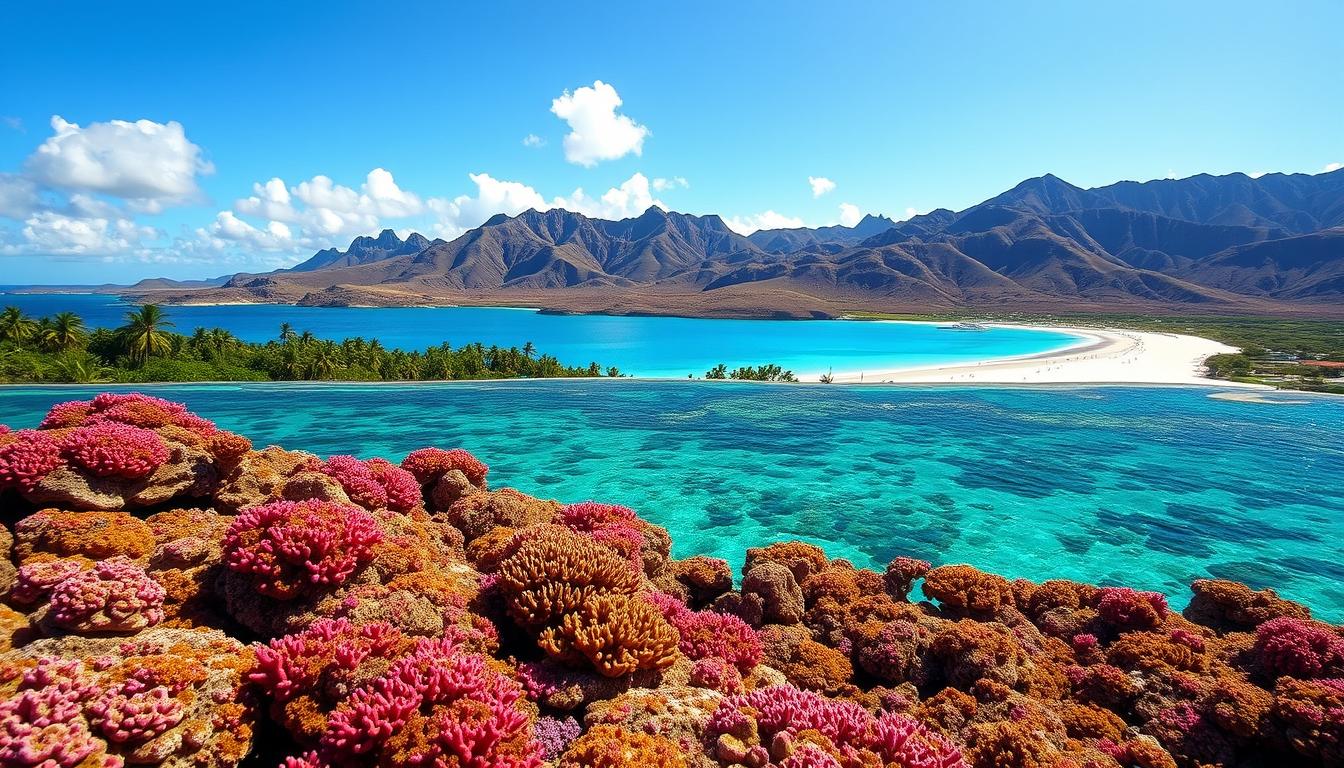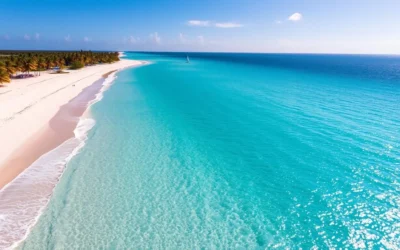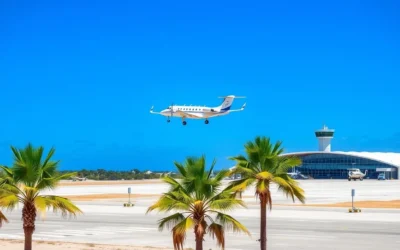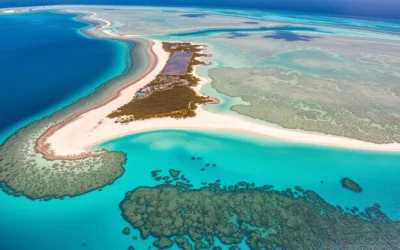✓ Accommodations✓ Flights✓ Rental Cars✓ Tours & Activities
Did you know that since 2011, Bonaire has used the U.S. Dollar as its official currency? This change has made it easier than ever for American visitors to handle payments during their stay. Located in the Caribbean, this island offers stunning landscapes and a hassle-free experience when it comes to managing your money.
This guide will walk you through everything you need to know about handling finances on your trip. From understanding the history behind the currency switch to practical tips on budgeting, we’ve got you covered. You’ll also learn about common payment methods, how to avoid unnecessary fees, and insider advice to make your travel experience seamless.
Whether you’re planning a short getaway or an extended stay, this article will help you navigate Bonaire’s financial landscape with confidence. Let’s dive in and make your trip as smooth as the island’s turquoise waters!
Understanding Bonaire’s Monetary Landscape
Since 2011, the island has embraced the U.S. Dollar as its official currency. This change has made transactions simpler for both locals and visitors. The stability of the U.S. Dollar ensures smooth financial operations across the island.
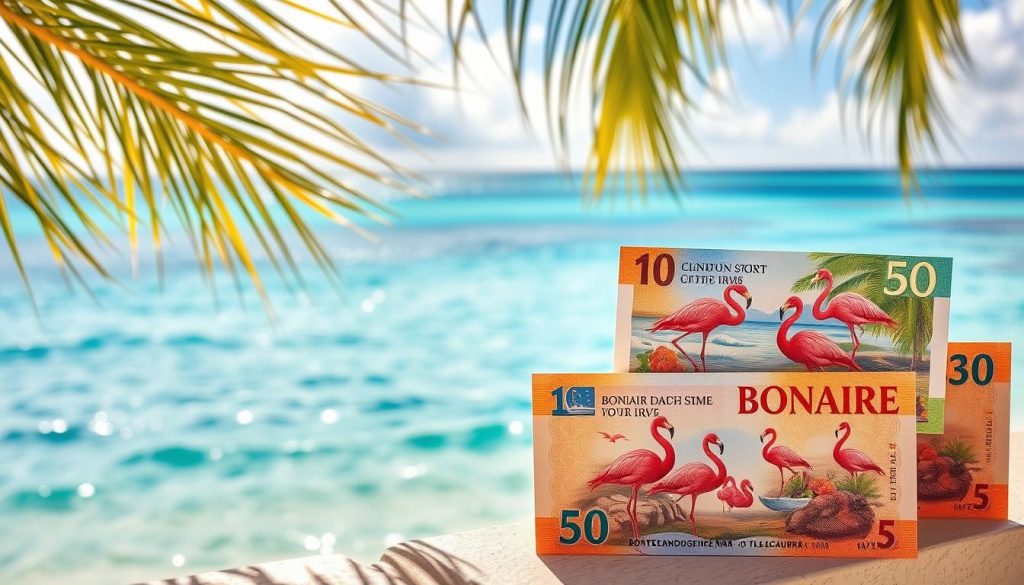
Overview of Official Currency
The U.S. Dollar was chosen for its global acceptance and reliability. This decision has eliminated the need for currency conversion for American visitors. It also provides a sense of familiarity for international travelers.
Using the U.S. Dollar has streamlined everyday transactions. From dining to shopping, you’ll find it easy to manage your money. Most businesses accept major credit and debit cards, though small cash transactions are still common.
Impact on Travelers
For American visitors, the monetary system is especially convenient. You won’t need to worry about exchanging currency or dealing with fluctuating rates. This makes budgeting for your trip straightforward and stress-free.
Accessing money is also hassle-free. ATMs are widely available, and most are compatible with international cards. Whether you prefer using cash or cards, the island’s financial infrastructure supports both options.
| Payment Method | Acceptance | Tips |
|---|---|---|
| Credit/Debit Cards | Widely accepted | Inform your bank before traveling |
| Cash | Preferred for small transactions | Carry small bills for convenience |
| ATMs | Available island-wide | Check for compatibility with your card |
Understanding the island’s monetary landscape ensures a seamless experience. Whether you’re dining out, shopping, or exploring, managing your finances will be a breeze.
A Brief History of Bonaire’s Currency Transition
The year 2011 marked a pivotal change in the island’s monetary system. Before this, the Netherlands Antillean Guilder was the official currency. This shift to the U.S. Dollar brought stability and simplified financial transactions for both locals and visitors.
From the Netherlands Antillean Guilder
For decades, the Netherlands Antillean Guilder was the primary currency. It was widely used across the island for everyday transactions. However, its limited global acceptance often created challenges for international visitors.
The dissolution of the Netherlands Antilles in 2010 led to significant changes. This event paved the way for a new monetary system. The switch to the U.S. Dollar was seen as a practical solution to streamline trade and tourism.
Adoption of the U.S. Dollar
The U.S. Dollar was chosen for its global recognition and stability. This decision eliminated the need for currency conversion, making it easier for American visitors. It also reduced complications in trade and financial transactions.
Over time, this transition has influenced local payment habits. Today, most businesses accept major credit and debit cards. Cash is still preferred for smaller transactions, but the island’s financial infrastructure supports both options.
For visitors, this means a hassle-free experience. You won’t need to worry about fluctuating exchange rates or finding currency exchange services. The island’s adoption of the U.S. Dollar ensures smooth and convenient transactions throughout your stay.
Payment Methods and Transaction Options on Bonaire
Managing your money on the island is straightforward, thanks to widely accepted payment methods. Whether you prefer using a credit card or carrying cash, you’ll find options that suit your needs. Understanding these choices will help you navigate transactions smoothly during your stay.
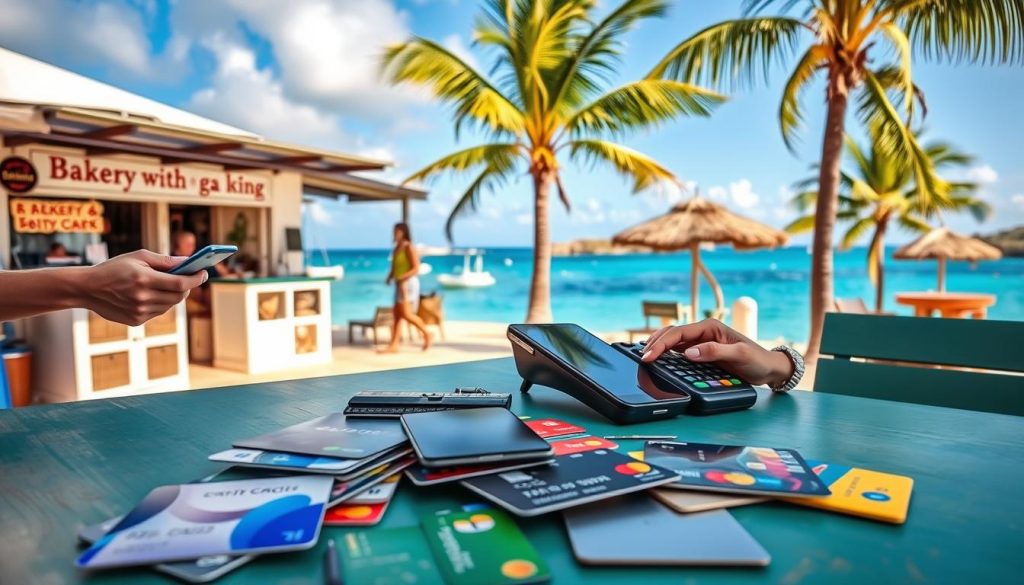
Credit and Debit Card Usage
Most tourist-oriented establishments, such as hotels, restaurants, and shops, accept major credit cards like Visa and MasterCard. This makes it easy to pay for larger purchases without carrying a lot of cash. However, it’s a good idea to inform your bank about your travel plans to avoid any issues with card usage.
While cards are widely accepted, some smaller vendors or local markets may prefer cash. This is especially true for smaller transactions. Always have a mix of payment options to ensure you’re prepared for any situation.
Cash Transactions and Local Practices
Carrying cash is essential for smaller purchases, tips, and transactions at local markets. Many local businesses, especially those outside tourist areas, operate primarily on cash payments. It’s also a good idea to carry smaller bills for convenience.
When using credit cards, be aware of potential foreign transaction fees. These can add up quickly, so check with your bank before your trip. Additionally, some establishments may charge a small fee for card payments, especially for smaller amounts.
The island’s culture also influences payment practices. Tipping is customary in restaurants, and while some places include a service charge, it’s always appreciated to leave a little extra for good service. Having a mix of cash and cards ensures you’re ready for any situation.
Accessing Cash: ATMs and Currency Exchanges
When visiting the island, accessing cash is straightforward and convenient. ATMs dispensing U.S. Dollars are widely available in key areas, making it easy to manage your money during your stay. Whether you prefer using a card or exchanging currency, you’ll find plenty of options to suit your needs.
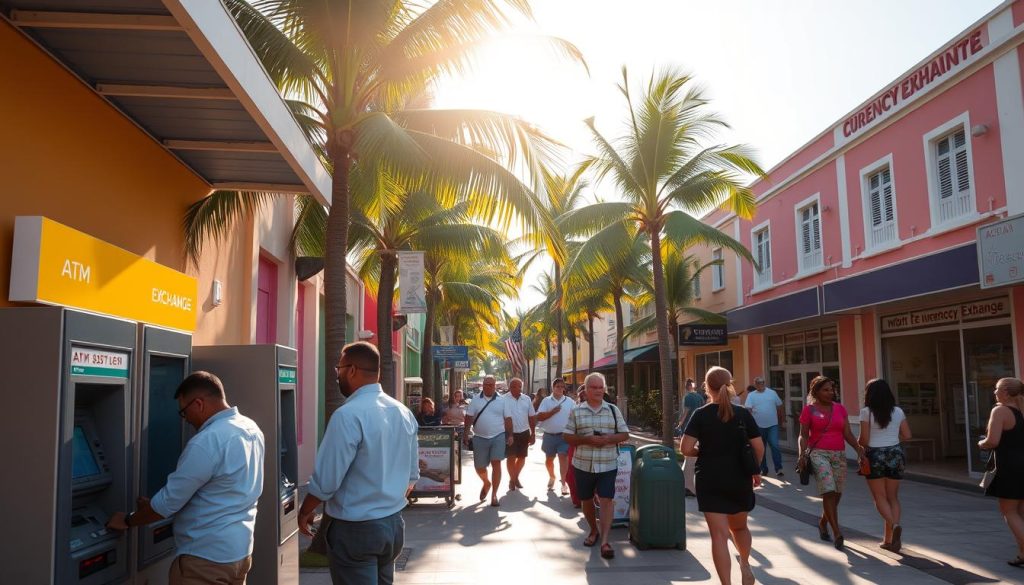
ATM Availability and Card Compatibility
ATMs on the island are operational 24/7 and accept major credit cards like Visa and Mastercard. Most machines dispense up to $1,000 per day, though some may have lower limits. It’s a good idea to check your bank’s withdrawal limits and inform them of your travel plans to avoid any issues.
While ATMs are widely available, some may charge a fee of $5.30 to $7.95 per transaction. To minimize costs, consider withdrawing larger amounts less frequently. Keep in mind that smaller vendors and local markets often prefer cash, so having some on hand is always a smart option.
Currency Exchange Services
If you need to exchange currency, banks and licensed bureaus on the island offer this service. However, since the U.S. Dollar is the official currency, most visitors won’t need to worry about exchange rates. For those coming from other countries, it’s best to compare rates and fees to get the most value.
Here are a few tips to keep in mind when accessing cash:
- Withdraw larger amounts to reduce transaction fees.
- Carry smaller bills for convenience at local markets.
- Monitor your bank statements for any unauthorized transactions.
By planning your budget and understanding the island’s financial infrastructure, you can ensure a smooth and stress-free experience. Whether you’re dining out, shopping, or exploring, having the right mix of cash and cards will make your trip even more enjoyable.
Budgeting and Tipping Customs for Your Bonaire Trip
Planning your trip to the island involves smart budgeting and understanding local customs. Whether you’re staying in a luxury hotel or a cozy guesthouse, managing your money wisely ensures a stress-free experience. Let’s explore how to make the most of your budget while enjoying all the island has to offer.
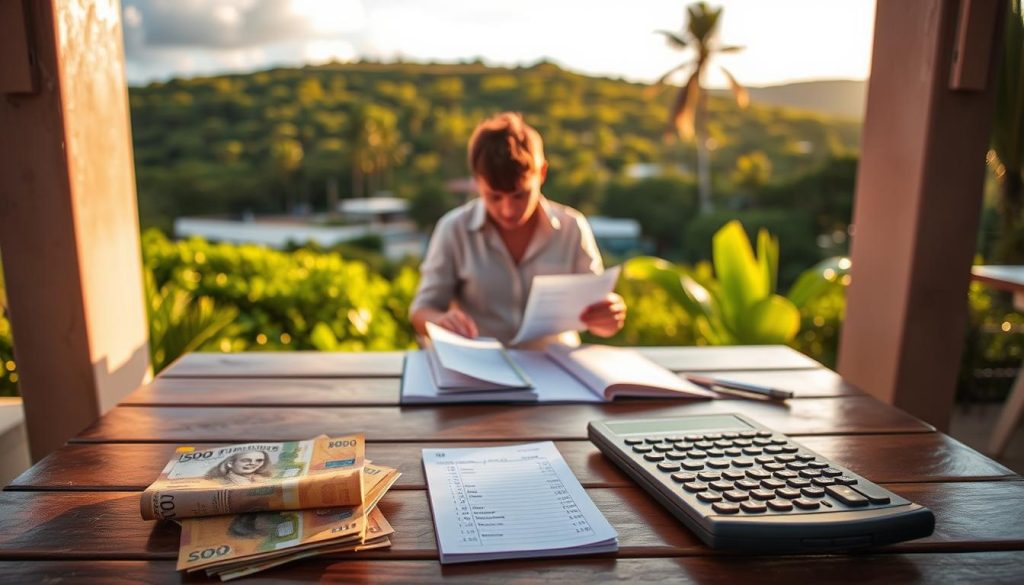
Managing Your Travel Budget
When planning your trip, consider expenses like accommodation, dining, and activities. The island offers a range of options, from high-end resorts to budget-friendly hotels. Booking your stay in advance can help you secure better deals and avoid last-minute price hikes.
For meals, you’ll find everything from casual street food to upscale dining. Setting aside a daily budget for food ensures you can enjoy local flavors without overspending. Don’t forget to allocate funds for activities like snorkeling, diving, or island tours, which are must-do experiences.
Here are some tips to stretch your budget:
- Book excursions early for discounts.
- Opt for local eateries to save on dining costs.
- Carry cash for smaller transactions and tips.
Local Tipping Etiquette
Tipping on the island follows U.S. patterns, with slight local variations. In restaurants, a tip of 10-15% is standard for good service. If the service is exceptional, consider leaving a little extra to show your appreciation.
For taxi rides and dive shop staff, a tip of 10% is customary. Tipping is also appreciated in hotels, especially for housekeeping and bellhop services. Carrying small bills makes it easier to tip without hassle.
Understanding these customs ensures you show gratitude appropriately while staying within your budget. By planning ahead and being mindful of your spending, you can enjoy a memorable trip without financial stress.
Insider Strategies to Avoid Unnecessary Fees
To make the most of your trip, knowing how to avoid unnecessary fees can save you a lot of money. Whether you’re using a credit card or withdrawing cash, a little planning goes a long way. Here are some insider tips to help you keep more of your money in your pocket.
Tips for Card and ATM Fee Savings
Using a fee-free card is one of the best ways to save. Many banks offer cards with no foreign transaction fees, which can add up quickly. Before your trip, check with your bank to see if they have this option available.
When it comes to ATMs, choosing the right one can make a big difference. Look for ATMs that don’t charge extra fees or are part of a network your bank supports. Withdrawing larger amounts less frequently can also help minimize costs.
Planning your transactions in advance is another smart move. For example, if you know you’ll need cash for a tour or resort stay, withdraw it ahead of time. This helps you avoid last-minute fees and ensures you’re prepared.
Here are a few more strategies to consider:
- Compare deals on tours and activities to get the best rate.
- Use apps or websites to find fee-free ATMs on the island.
- Inform your bank of your travel dates to prevent your card from being blocked.
By following these tips, you can enjoy your trip without worrying about hidden costs. A little preparation ensures a smooth and budget-friendly experience.
Bonaire: Ultimate Travelers Guide to Currencies & Payments
Exploring the island’s vibrant culture and stunning landscapes is even more enjoyable when you know how to handle everyday transactions. Whether you’re grabbing a coffee or booking a dive, the use of the U.S. dollar simplifies everything. This makes it easy for travelers to focus on the experience rather than worrying about currency exchange.
Everyday Transaction Practices
From dining to shopping, most places on the island accept major credit cards like Visa and MasterCard. This is especially convenient for larger purchases. However, smaller vendors and local markets often prefer cash, so it’s a good idea to carry some with you.
For travelers, this means balancing card and cash usage. While cards are widely accepted, having cash on hand ensures you’re prepared for any situation. Always carry smaller bills for convenience, especially when visiting local spots.
Featured Spots and Seamless Payments
When you visit Bonaire, knowing the official currency makes transactions seamless. Popular spots like restaurants, dive shops, and tour operators typically accept cards. However, for transportation, such as renting a car or taking a taxi, cash is often the preferred way to pay.
Here are a few tips to make your payments smooth:
- Use cards for larger purchases to avoid carrying too much cash.
- Keep small bills handy for tips and smaller transactions.
- Inform your bank about your travel plans to avoid card issues.
Smart Money Management Tips
Managing your money wisely ensures a stress-free trip. Start by setting a daily budget for meals, activities, and transportation. This helps you stay on track while enjoying everything the island has to offer.
When renting a car, check if the rental company accepts cards or requires cash. Many places offer both options, but it’s always best to confirm in advance. By planning ahead, you can avoid unnecessary fees and make the most of your trip.
Whether you’re exploring the island’s hidden gems or relaxing at a beachside café, smart money management ensures a seamless experience. With the U.S. dollar as the official currency, handling payments is straightforward and hassle-free.
Ensuring Safety and Security with Money Matters
Staying safe with your money is a key part of enjoying your trip to this Caribbean paradise. While the island is generally safe, it’s important to take precautions to protect your cash and cards. This ensures you can focus on the adventure and beauty of your visit without unnecessary stress.
Safeguarding Your Cash and Cards
When traveling, keeping your money secure is essential. Use a hotel safe to store extra cash, passports, and valuables. For daily outings, carry only what you need and keep it in a concealed pouch or money belt.
Split your cash and cards between different locations. This way, if you lose one item, you’ll still have access to funds. Avoid displaying large amounts of money in public, especially in crowded areas or at the beach.
Local Security Practices
On the island, locals are friendly, but it’s wise to stay vigilant. Be cautious in tourist areas, where pickpocketing can occur. Keep an eye on your belongings, especially when enjoying activities like diving or relaxing by the water.
If you lose your wallet or experience theft, report it immediately to local authorities. You can dial 911 for police assistance. Also, contact your bank to block cards and prevent unauthorized transactions.
Here are some additional tips to stay secure:
- Use ATMs in well-lit, secure locations.
- Inform your bank of your travel dates to avoid card issues.
- Carry a photocopy of your passport and important documents.
| Safety Tip | Why It’s Important |
|---|---|
| Use a hotel safe | Protects valuables from theft |
| Carry minimal cash | Reduces risk of loss |
| Stay vigilant in crowds | Prevents pickpocketing |
By following these practices, you can enjoy your visit to this tropical paradise with peace of mind. A little preparation goes a long way in ensuring a smooth and secure experience.
Conclusion
Handling money on this Caribbean paradise is simpler than you might think. With the U.S. Dollar as the official currency, managing your finances becomes a breeze. From understanding payment methods to budgeting and saving on fees, this guide has equipped you with everything you need to navigate the island like a local.
Planning your visit with these tips ensures a stress-free experience. Whether you’re exploring hidden gems or enjoying the vibrant diving spots, smart money management enhances every moment. Remember, carrying small bills for tips and balancing cash with cards is the best way to go.
Revisit this guide whenever you need a refresher, and share these insights with fellow visitors. With careful planning, your adventure on this stunning island will be as smooth as the turquoise waters that surround it.
The above is subject to change.
Check back often to TRAVEL.COM for the latest travel tips and deals.
